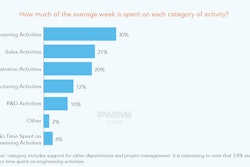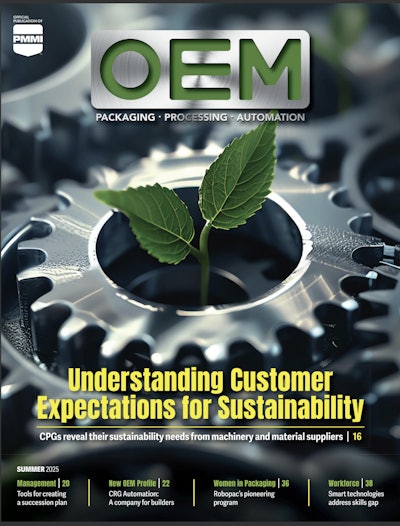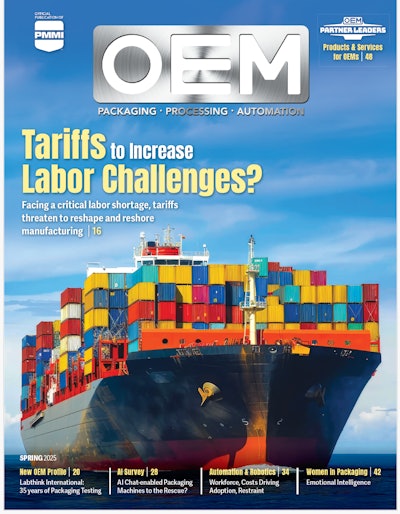In April, FDA took the rare step of explaining to consumers the safety of substances in food, including those from packaging. And, no kidding, hooray!
For decades, I have worked with clients on assuring the compliance with FDA requirements of food-contact materials and food additives. With some regularity, substances in food-contact materials or foods are the subject of controversy, usually in the form of scientists saying a particular substance is safe while the public demands that they stop using it anyway.
Packaging makers and users often feel misunderstood over issues like this. It has long been my observation that the core reason for these controversies is often that the public does not understand the concept that very tiny amounts of substances that might be unsafe at higher levels are undeniably safe at those very tiny levels.
It’s a concept that underlies basic toxicology–the science of the safety of substances. In fact, the concept is even incorporated into the law’s definition of what makes a food unlawful because it’s “adulterated.” The definition says a food is adulterated if it has in it an added substance that’s “poisonous or deleterious” and “which may render it injurious to health.” That is, if it’s there but won’t hurt you, the food isn’t adulterated.
Are there legitimate safety concerns about substances accumulating in the body, or the cumulative exposure an individual might get if exposed to those tiny amounts of a substance from different sources? Yes, of course, and those should be fully evaluated and lead to any needed corrective actions. But too often, the controversy is over exposures to the tiny amounts–parts per million or billion or even trillion, for example–that scientists are totally OK with.
This concept is, admittedly, not intuitive to the average consumer and very difficult to explain to them. And, as NGOs are well aware, it’s easy to generate public support for a simplistic message such as “Just get it all out of there,” with no regard for whether it’s necessary to eliminate it for health and safety reasons, to say nothing of the costs and disruptions involved with removing and replacing a component substance from a food or packaging material’s formulation.
I have had countless conversations with clients, students, and conference audiences about the broad topic of what companies can do to combat these factually flawed controversies, these chemical-of-the-month debates. And there’s no easy answer to that question, or the question of why they keep cropping up. I surmise the best explanation for why is that the public simply does not understand this concept of there being situations where one is exposed to very tiny amounts of substances that simply are not harmful at that level.
So it was most welcome when FDA in April published a public document nailing this topic on its head, called “Is Food Safe If It Has Chemicals?,” part of an agency web page called “Chemicals in Foods: The Facts.” I cannot recall a prior example of the agency making such an attempt to explain these issues to the public.
The Is Food Safe document contains helpful statements such as “The presence of a chemical alone isn’t what determines whether a food is safe to eat. To assess the safety of chemicals in food, scientists at the U.S. Food and Drug Administration and others worldwide look at information about the chemical’s safety, as well as how much of a chemical is in the food and how much a person eats or drinks. It’s the amount that counts.” Two important comments on this, a quibble first: It’s not only FDA scientists that look at safety information; industry scientists do, too. Second, that emphasis on the words ‘how much’ is from FDA’s document, and was not added by me.
There’s also this from FDA, perhaps with social media in mind: “Reading or hearing about chemicals in food, when combined with words like ‘toxic,’ ‘extremely dangerous,’ and ‘cancer-causing’ may be scary, especially if you aren’t getting all the facts.” Elsewhere, FDA says “There’s a lot of calculation and consideration that goes into scientifically assessing safe amounts of chemicals in food. That applies to chemicals that are used in packaging, added to food, contaminants from the environment, or chemicals that can form when raw foods are cooked and processed.”
Regarding FDA’s comment that “there’s a lot of calculation and consideration,” I second that emotion: I have long lamented that the world has much too little appreciation for the extent of the engineering, evaluation, and just plain good-faith effort that packaging professionals put into safety evaluations of their materials.
Here's hoping FDA’s effort to help the public understand issues like these will help improve public discussion. On the other hand, the other day I watched a late-night comedian ask people on the street to name the three branches of our government. The results were not encouraging.
Eric Greenberg can be reached at [email protected]. Or visit his firm’s website at www.ericfgreenbergpc.com.
INFORMATIONAL ONLY, NOT LEGAL ADVICE.






















